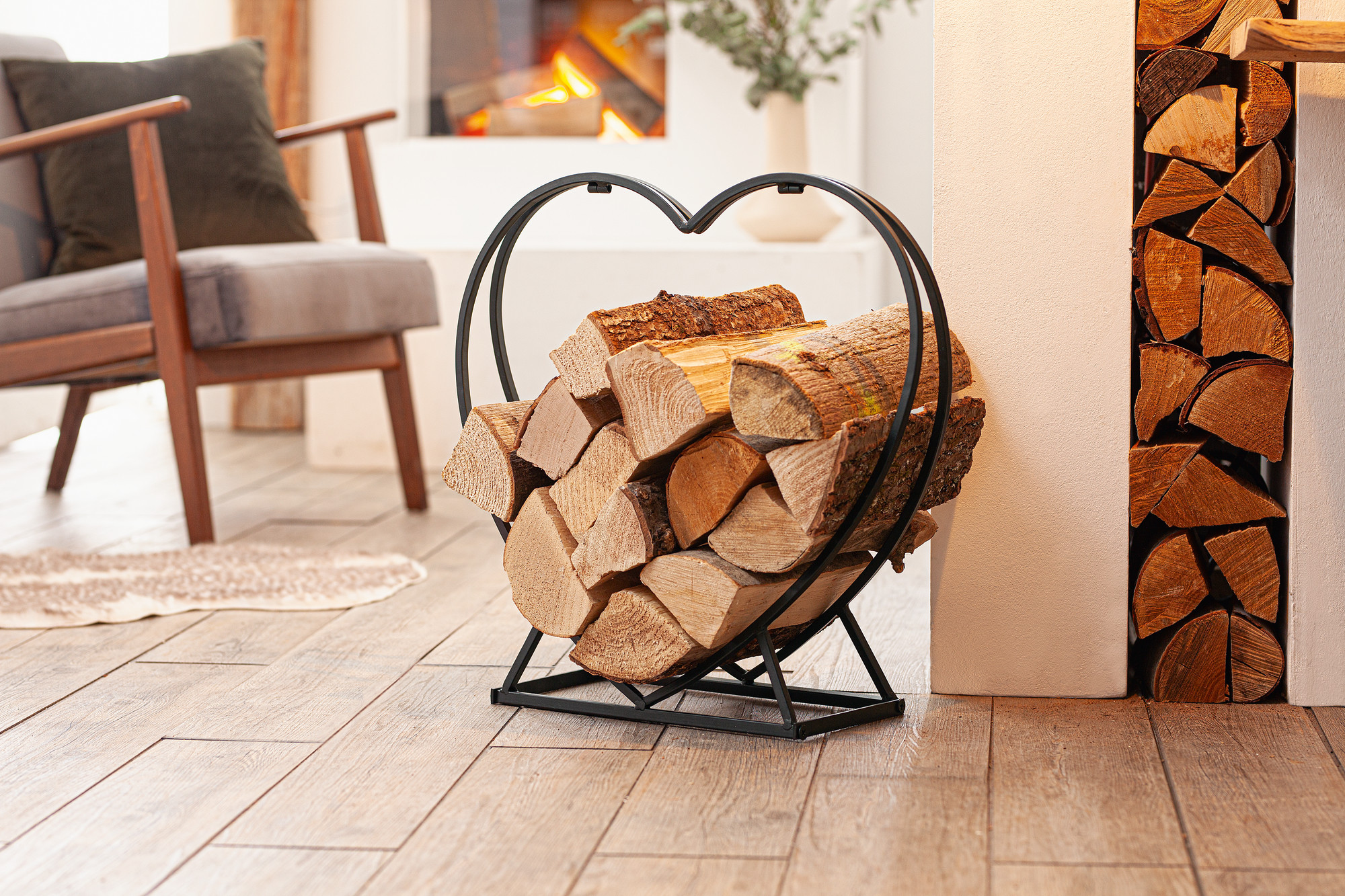
For generations, the image of cozy warmth has been tied to a crackling fireplace stacked with rough, split logs. It’s a tradition passed down through families, a ritual we rarely question. But what if this timeless practice is based on a fundamental misunderstanding of physics and chemistry? What if, for over a hundred years, we’ve been burning wood woefully inefficiently?
The truth is, the world of home heating has undergone a quiet revolution. The choices are no longer just between different types of logs. Modern solid biofuels like wood briquettes and wood pellets have transformed efficiency, convenience, and environmental impact. It’s time to debunk the myths and explore how to truly master the art of fire.
The Single Most Important Factor: Moisture Content is Everything
The biggest lie we’ve told ourselves is that any dry-looking log will burn well. The critical metric isn’t how long it’s been sitting in your shed, but its precise moisture content.
Imagine trying to burn a freshly cut tree. It sizzles, smokes, and struggles to catch flame. This is because a huge amount of the energy from your fire is being wasted simply to boil off the water trapped inside the wood before it can even begin to burn efficiently. This creates excessive smoke, deposits creosote in your chimney (a significant fire hazard), and delivers minimal heat.
- Green/Wet Wood: Can have a moisture content of 50% or higher. Over half its weight is water. This is terribly inefficient and polluting.
- “Seasoned” Firewood: Traditionally, wood is air-dried for 1-2 years. This can bring moisture content down to around 20-25%. It’s better, but still far from optimal.
- Kiln-Dried Firewood/Biofuels: This is where the game changes. Through controlled kiln-drying or industrial compression, moisture levels are driven down to below 10%.
Why does this matter? Because lower moisture content means higher thermal efficiency. Your fire uses almost all of its energy for producing heat, not evaporating water. This results in:
- More Heat: A significantly higher temperature and more usable energy output.
- Less Smoke: A cleaner, more complete burn that is better for air quality and your lungs.
- Less Creosote: Dramatically reduced risk of dangerous chimney fires.
- Less Ash: Up to 90% less ash residue, making cleanup quick and easy.
Beyond the Log: The Rise of Engineered Biofuels
This is where the old knowledge truly becomes obsolete. While kiln-dried firewood is excellent, technology has created even more efficient and convenient solutions by harnessing the power of wood waste.
1. Wood Briquettes: The Super-Dense Log
Wood briquettes are made from dry, compressed sawdust and wood shavings—often the by-products from sawmills like ours at Ray Wood Exploatare SRL. This process creates a fuel that is incredibly dense and uniform.
Key Advantages:
- Superior Energy Density: They can burn hotter and for up to 50% longer than traditional logs of a similar size due to their low moisture content (<8%) and high density.
- Consistent Performance: Every briquette is the same, providing a predictable and reliable burn. No more guessing games with different logs.
- Space Efficient: They take up far less storage space than an equivalent amount of firewood.
- Low Waste: They utilize wood waste, supporting a circular bioeconomy.
Ideal for: Fireplaces, wood-burning stoves, and furnaces where you want long-lasting, radiant heat and a beautiful flame.
2. Wood Pellets: Automated Precision Heating
Wood pellets take efficiency to the next level through automation. They are also made from compressed, untreated sawdust but are formed into small, uniform cylinders perfect for automated feed systems in dedicated pellet stoves and boilers.
Key Advantages:
- Ultra-High Efficiency: Pellet stoves are typically rated at over 90% efficiency, meaning almost all the fuel is converted directly into heat for your home.
- “Set and Forget” Convenience: Automated hoppers and thermostats allow for consistent, controlled heat for days with minimal intervention.
- Extremely Clean Burn: Their low moisture and ash content make them one of the cleanest solid fuel options available.
- Carbon Neutral Heating: The CO2 released when burned is equal to what the tree absorbed during its growth, making it a renewable energy source.
Ideal for: Homeowners seeking a primary or significant secondary heat source that combines the ambiance of wood with the convenience of a modern appliance.
How to Heat Smarter: Your Action Plan
- Invest in a Moisture Meter: This simple, inexpensive tool is the key to真相(zhēnxiàng – truth). Test your wood before you burn it. Aim for a moisture content of 20% or less, with 10-15% being the gold standard.
- Consider the Source: Where you buy your fuel matters. Look for suppliers like Ray Wood Exploatare SRL who provide certified sustainable wood products with guaranteed moisture levels. Don’t just buy “seasoned” wood from a random vendor; demand quality.
- Match the Fuel to the Appliance: Don’t burn briquettes in a stove not designed for them, and never burn pellets in a regular fireplace. Use the right fuel for the right technology to maximize safety and efficiency.
- Think Circular: Choose biofuels made from industrial wood waste. You’re not only heating your home more efficiently but also supporting an industry that uses every part of the tree, reducing waste and promoting sustainable forestry.
The Bottom Line: It’s Time to Evolve
The romance of the traditional wood fire will never fade. But now, we can enhance that experience with science and innovation. By understanding moisture content and embracing engineered biofuels, we can move beyond the “100-year lie.”
We can achieve more heat with less fuel, enjoy greater convenience, and take pride in making a more sustainable choice for our homes and our planet. The future of fire isn’t about abandoning tradition—it’s about burning smarter.
Ready to experience the difference of premium, efficient biofuels? Explore our range of kiln-dried firewood, wood briquettes, and wood pellets designed for maximum heat and minimum waste.

